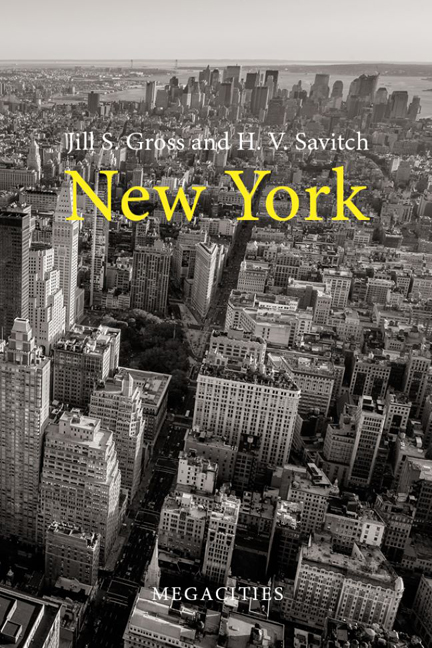Book contents
- Frontmatter
- Contents
- Preface and acknowledgements
- 1 Introduction: New York as a megacity
- 2 Crises, breakdowns and New York’s endurance
- 3 Building a global megacity: corporate- centred urban development and leadership
- 4 Expanded governance in the megacity
- 5 Neighbourhoods, diversification and gentrification in the megacity
- 6 Globalization in the megacity
- 7 Conclusions
- References
- Index
7 - Conclusions
Published online by Cambridge University Press: 20 January 2024
- Frontmatter
- Contents
- Preface and acknowledgements
- 1 Introduction: New York as a megacity
- 2 Crises, breakdowns and New York’s endurance
- 3 Building a global megacity: corporate- centred urban development and leadership
- 4 Expanded governance in the megacity
- 5 Neighbourhoods, diversification and gentrification in the megacity
- 6 Globalization in the megacity
- 7 Conclusions
- References
- Index
Summary
Megacity change
During the course of editing this manuscript, our editor, Alison Howson, questioned whether New York crises were “inevitable”. The question penetrated all that we had written and touches on a key finding of our work – the centrality of crisis. Our model of change at the beginning of this volume, locates crises/tensions between growth on one hand and adaptation on the other hand. While tensions refer to “pressures” emanating from groups, “crises” are transition points that can morph into system- wide breakdown. As such they are pivotal to transformation. Crises can also generate innovation, as evidenced by the flood- resistant redesign of Lower Manhattan put into motion after superstorm Sandy. While “inevitable” is not the word we would use, crises have been a major part of the New York's history and some authors have treated it as an inevitability.
Crises have a certain tenacity and seem to always lurk in the background of any serious event. Such was evident across the cases and themes documented throughout this volume. Hence, tensions in the system are seen as having the potential for leading to crises, and ultimately regime change. The most recent incidents of protests/riots in the summer of 2020 and subsequent rising crime rates in 2021– 22 were serious enough to disrupt political and social order. Given enough duration and severity the electorate might have turned towards extremes of left or right. While voters did not take to the extremes, instances of sequential disorder tell us something about the fragility of change.
The protests/riots of 2020 had ample precedent and like most critical events they had both distant and proximate causes. The distant cause revolved around police abuse all too common in encounters with African- American neighbourhoods. The proximate cause or immediate “trigger” for rioting usually entailed an incident between citizens and the police or between different social classes that resulted in injury or death.
During the 1960s protests/riots erupted throughout the megacity. In Harlem riots burst onto the streets in 1964, due to the shooting of a black youth by a white off- duty police officer, and again in 1968 following the assassination of Martin Luther King.
- Type
- Chapter
- Information
- New York , pp. 159 - 170Publisher: Agenda PublishingPrint publication year: 2023



